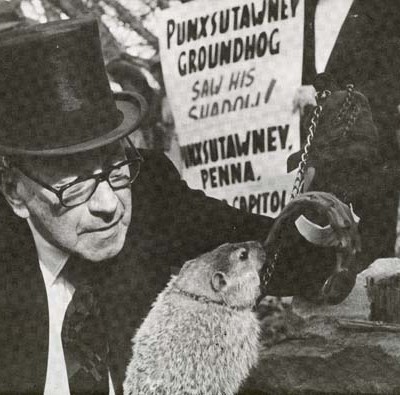
Punxsutawney, Pa. was settled along the Shamokin path between the Allegheny and Susquehanna rivers in the late 1790s and was incorporated as a borough in 1849. The borough grew rapidly in the late 1800s, with the development of coal in the region.
Jewish families began meeting for worship services in Punxsutawney as early as 1886 and founded Chevra Aguadas Achim Congregation in 1889. The congregation established a cemetery in Cloe, Pa. 1889 and broke ground on a small brick synagogue at Indiana and Maple streets in 1900. The synagogue was demolished in 1949, perhaps to accommodate road construction, and a new synagogue was built on Church Street.
According to a community survey from the American Jewish Yearbook, Chevra Aguadas Achim was operating a daily religious school with fifteen students by 1907. In 1924, the local chapter of the National Council of Jewish Women organized a religious school under the auspices of the Southwestern District of Pennsylvania Jewish Religious Schools Program. The Jewish community of Punxsutawney organized the Bnai Zion Society in April 1907 to oversee Zionist activities in the borough and often joined together with regional Zionist activities based out of Pittsburgh. The first secretary of the local Zionist society, Ida Rosenthal, later married the son of Rabbi Moshe Simon Sivitz, who led Shaaray Torah Congregation in Pittsburgh. Jefferson County participated in regional fundraising activities during World War I. The communities of Punxsutawney and nearby Reynoldsville, Pa. raised more than $65,000 for the Jewish War Relief Campaign in 1919. Starting as early as the 1950s, a local chapter of Hadassah chapter filled a similar role. The Jewish community in Punxsutawney also supported a B’nai B’rith lodge and, as early as 1968, merged with a lodge in nearby DuBois, Pa.
One of the best-known Jewish families in Punxsutawney was the Light family. Abraham Light owned several coal companies and was director of the Punxsutawney National Bank, among his many business ventures. His son Sam Light was also in the coal business but was best known as president of the Punxsutawney Groundhog Club from 1952 to 1976. In that role, he introduced the cutaway coat and silk top hat worn by members of the club each Groundhog’s Day when they check to see if Punxsutawney Phil saw his shadow.
The Jewish population of Punxsutawney reached its peak during World War I and gradually declined over the following decades. The American Jewish Yearbook estimated a Jewish population of 200 in its 1907-1908 edition, 275 in its 1918-1919 edition, 125 in its 1928-1929 edition and of 90 in its 1940-1941 edition. The Jewish community in Punxsutawney was a small hub for Jefferson County and partnered with Jewish residents in Reynoldsville and the county seat of Brookville, Pa. on fundraising and other communal ventures. These smaller communities may have represented a sizeable percentage of the Jewish population in Jefferson County. While the American Jewish Yearbook estimated a Jewish population of 200 in Punxsutawney in 1907-1908, Chevra Aguadas Achim reported having 300 members at the time. A volume of local history by W. J. McKnight from 1917 titled Jefferson County, Pennsylvania: her pioneers and people, 1800-1915 counted 300 Jewish heads of household in Jefferson County in 1906. Chevra Aguadas Achim closed in the early 1980s and donated its plaques to Sons of Israel Congregation in DuBois. The Church Street synagogue was still standing in 2013.